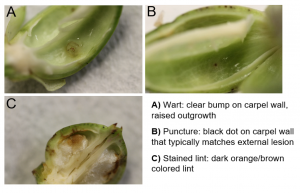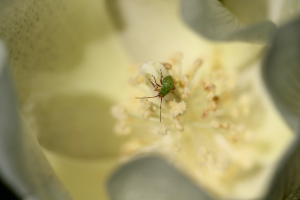Please see the attached table for current black light trap captures of corn earworm moths: BLT_6_Sep_2018
Category Archives: Insect
Black light trap report for Aug. 30, 2018
Average nightly captures of corn earworm moths in local black light traps this week were: Hanover=1.0; Southampton=0.7; Suffolk=28.1; Warsaw=3.6; Waverly=3.7. Here is the table: BLT_30_Aug_18
Corn earworm moth black light trap report for August 23, 2018
Average nightly corn earworm moth captures for local black light traps this week were as follows: Chesapeake=8.0; Dinwiddie=42.6; Hanover=3.4; Isle of Wight=0.9; Prince George (Templeton)=1.3; Prince George (Disputanta)=3.3; Warsaw=6.6; Southampton=0.9; Suffolk=33.0; and Sussex=1.9
Here is the link to the data table: BLT_23_Aug_2018
Thanks to Watson Lawrence, Mike Parrish, Laura Maxey Nay, Livvy Preisser, Scott Reiter, Mary Beahm, Neil Clark, and Dwayne Sanders for their reports!
Corn earworm moth black light trap report for August 16, 2018
Corn earworm moth catches in area black light traps averaged 2 to 45 per night. Please see the attached table for more details. blt_16_Aug_2018
Corn earworm update–Aug. 9, 2018
Corn earworm moth captures in area black light traps are still increasing. Please see the attached table here: BLT_9_Aug_2018
Survival of corn earworm (bollworm) moths in the cypermethrin vial tests increased slightly this week, making the seasonal average = 21.4%, with 360 moths tested to date.
Plant Bug Update – 02 Aug 18
Tarnished plant bugs have continued to be a problem in flowering cotton in some Virginia cotton fields. This week, scouts found 10 out of 30 fields above the bloom threshold of 2-3 plant bugs per drop cloth sample across Virginia’s cotton-growing region. Six of these fields averaged above the bloom threshold for the past two weeks (see map below). Dirty blooms may indicate plant bugs are present but should not be used as a threshold for spray decisions. Cracking bolls and observing internal boll injury in small dime and quarter-sized bolls is also a great indicator bugs may be present and causing significant damage. Internal boll injury includes raised warts or outgrowth on the carpel wall, small black punctures that usually match an external lesion, and stained lint. We recommend observing at least 25 bolls per field for internal injury in addition to drop cloth sampling to make informed spray decisions. Plant bug populations have peaked in mid-August over the past few years in Virginia so we recommend continued scouting during the coming weeks. Check out this video if you would like to see a short tutorial on drop cloth sampling.
Black light trap and vial test update for August 2, 2018
Corn earworm moth captures in black light traps continued to climb this week–please see the attached table (pdf document) for more details: BLT_2_Aug_2018
We have tested 246 corn earworm moths in our vial tests this season, with an average of 15% surviving a 24-hour exposure to the pyrethroid insecticide cypermethrin at 5 micrograms per vial. The line graph is available here: vial_tests_2_Aug_2018
At our research farm in Suffolk this week, we have been finding bollworm eggs in cotton terminals with some small larvae on squares and bolls. Please be sure to scout your fields!
2018 survey of field corn for corn earworm larvae
Statewide, approximately 18% of ears were infested with corn earworm larvae. Corn is considered a nursery crop for corn earworm, allowing the pest to complete a lifecycle and then move on to other crops such as soybean, cotton, and peanut in August. There is a linear correlation between the infestation level in corn and the amount of soybean acreage that gets treated with insecticide for this pest. Please see the attached pdf for more details: CEW_survey_results_2018
Corn earworm moth report for July 26, 2018
Black light trap captures of corn earworm moths in Suffolk really jumped this week, averaging 30 per night (some nights when it wasn’t raining went up to 78). Other locations (Chesapeake, Isle of Wight, Prince George/Templeton, Prince George/Disputanta, Warsaw, and Southampton) averaged only about 1 moth per night this week.
Corn earworm black light trap report for July 19, 2018
Corn earworm moth captures in Virginia black light traps ranged from zero to 2 per night this week. Watson Lawrence in Chesapeake averaged 1 moth per night; LIvvy Preisser in Isle of Wight had 0.6 per night; Scott Reiter reported zero in Prince George (Templeton) and 0.5 per night in Disputanta. Mary Beahm in Warsaw saw 0.1 corn earworm moths per night; and in Suffolk we caught an average of 2.1 per night. We look forward to Dwayne Sanders’ help with operating a trap in Waverly!
In 2017, black light trap captures of corn earworm moths started to spike in the third week of July. Please check back for next week’s report!



